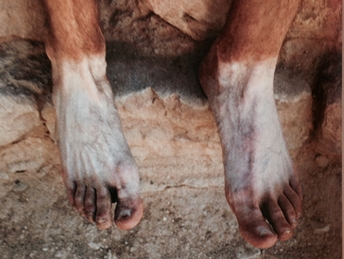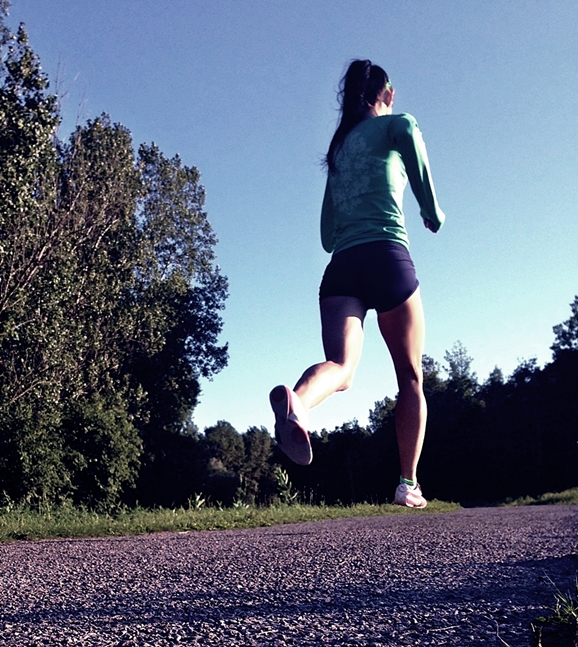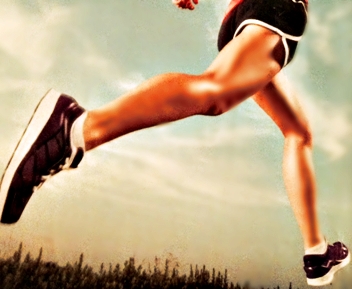Research over the past 30 years has shown that the cause of running-related injuries is multifactorial. Training volume, muscle strength imbalances, and biomechanical impairments are among the many that contribute to injury in runners.
Traditionally, runners in most of the literature on running-related injuries were heel strikers. However, recent studies suggest that since humans ran barefoot for millions of years, we may have adapted to run with a forefoot strike as it may serve as a better protective barrier from harmful impacts compared to heel strike running.
 when running barefoot, proprioceptive feedback in the feet is thought to be important for the proper execution of fine, steady motor acts and reflex control
when running barefoot, proprioceptive feedback in the feet is thought to be important for the proper execution of fine, steady motor acts and reflex control
- previous reports have found that a forefoot strike did not cause any measurable impact peaks compared to a heel strike

Thus, there is a good chance humans may be hardwired to run with a forefoot strike and if forefoot striking (shown above) is the ‘natural’ style of running, could it be that heel striking (shown below) may exacerbate biomechanical impairments thereby causing injury?
Everybody varies  in their ‘locomotive flow’, but could heel striking bring out the worst in our running form? This may be the case as 75%-90% of joggers heel strike and injury rates are consistently high.
in their ‘locomotive flow’, but could heel striking bring out the worst in our running form? This may be the case as 75%-90% of joggers heel strike and injury rates are consistently high.
Past studies on the connection of forefoot strike running and injury prevention imply that from a mechanical perspective, a forefoot strike landing may protect the muscles from being overloaded and regulation of muscle tension may be within optimal range.
If the body was anatomically designed to land on the forefoot when running, perhaps pronation, foot posture, and leg ailment discrepancies would be less symptomatic than if a runner continued to heel strike.
Overall, its time researchers ramped up the studies on forefoot strike mechanics to potentially establish better postinjury guidelines and to find specific ways to help improve the prognosis for runners with biomechanical impairments.
More From Run Forefoot:
- Meb Keflezighi Wins Boston Marathon and Ditching the Heel Strike Helped Him Do It
- Tirunesh Dibaba Running Technique
- Ethiopians Not Genetically Gifted for Running. They Train Harder and Don’t Heel Strike
- Ethiopian Distance Runners are Forefoot Strikers Not Heel Strikers
References:
Hasegawa et al. (2007). Footstrike patterns of runners at the 15-km point during an elite-level half marathon.
Kerr et al. (1983). Footstrike patterns in distance running.
Larson et al. (2011). Foot strike patterns of recreational and sub-elite runners in a long distance road race.
Lieberman, DE. and Bramble, DM. (2007). The evolution of marathon running capabilities in humans.
Bretta Riches
BSc Neurobiology; MSc Biomechanics candidate, ultra minimalist runner & founder of RunForefoot. I was a heel striker, always injured. I was inspired by the great Tirunesh Dibaba to try forefoot running. Now, I'm injury free. This is why I launched Run Forefoot, to advocate the health & performance benefits of forefoot running and to raise awareness on the dangers of heel striking, because the world needs to know.
Latest posts by Bretta Riches (see all)
- Forefoot Running and Achilles Pain - 19/04/2024
- Does Foot Strike Really Matter in Running? YES! - 17/04/2024
- Heel Lifts Increase Injury in Runners - 16/04/2024

Leave a Reply